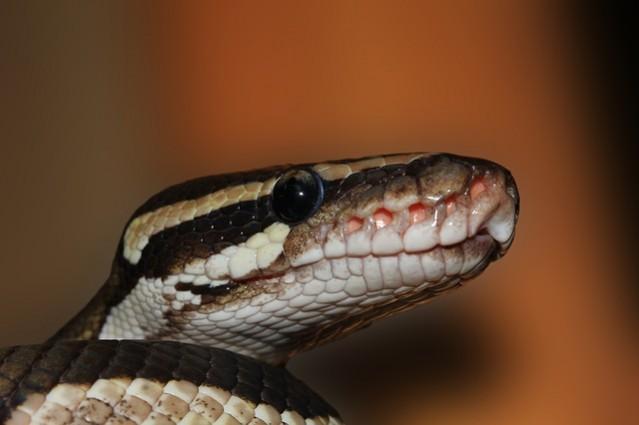
A video of a snake tearing its prey apart has opened new horizons for scientists to study and understand the concept of convergent evolution.
Snakes usually swallow their prey whole, but the small cat-eyed water snakes (Gerarda prevostiana) has a unique way of eating crabs.
Convergent evolution can be defined as the process by which related species evolve certain traits, like similar body forms, coloration, organs, and adaptations, to make the most of their ecological niches.
A team of researchers from the University of Cincinnati has observed the unique technique employed by the small cat-eyed water snakes (Gerarda prevostiana) and studied how this eating behavior has helped the species thrive throughout Southeast Asia.
The snake, which is endemic to this region, has an abundance of hard shell crabs, which are generally five times larger than what the snakes' jaws can accommodate. So how do these reptiles manage?
They attack crabs, which have shed their old shell and are softer than usual. They bite and take the prey in a tight grasp. Then they loop with their body and start pulling the crab through it until the crustaceans' limbs separate. The snakes then proceed to eat the prey piece by piece.
Calling them "little gourmands", research leader Bruce Jayne points out that this is the "most un-snake-like behaviour", according to National Geographic.
Jayne and his team were also surprised by the fact that the snake goes for freshly molted crabs The Queen snake (Regina septemvittata) of North America, also displays similar behavior and feeds on crayfish that has shed off its hard shell.
"If the snakes [cat-eyed water snake] are small enough, and attack a hard-shell crab instead of a softshell crab, instead of getting dinner, they may become dinner," Jayne added.
The study has been published in the Biological Journal of the Linnean Society on February 26.
The researchers also studied the eating habits of two related species – the white-bellied mangrove snake (Fordonia leucobalia) and Cantor's water snake (Cantoria violacea).
The reptiles prefer hard-shelled crabs and snapping shrimp, respectively. A white-bellied mangrove snake will attack the crab with a closed mouth, slamming and pinning it into the mud and then ripping it apart by coiling around it.
On the other hand, Cantor's water snakes eat snapping shrimp by swallowing them whole, according to Science Alert.
Check out the video of the cat-eyed water snake here:















